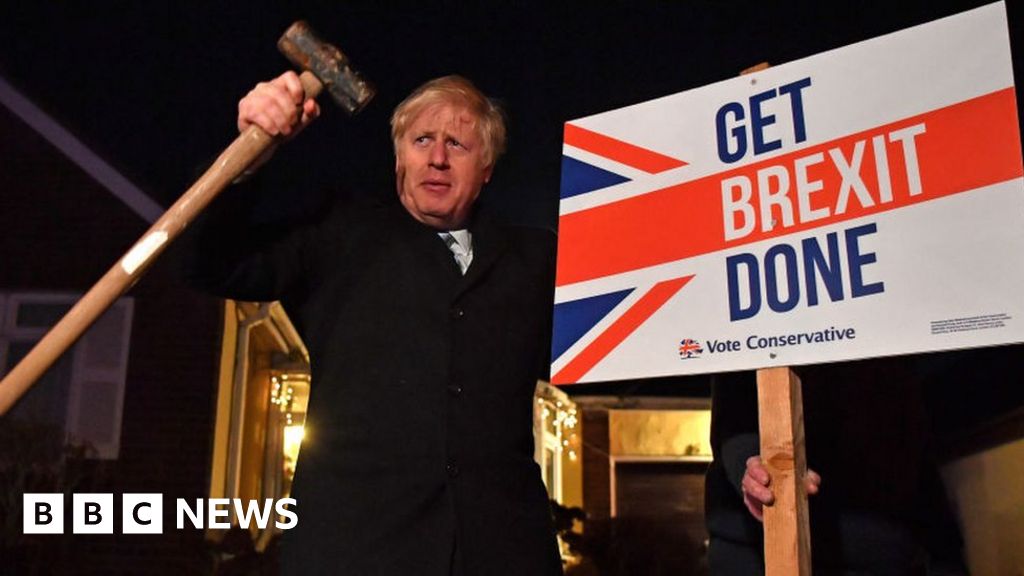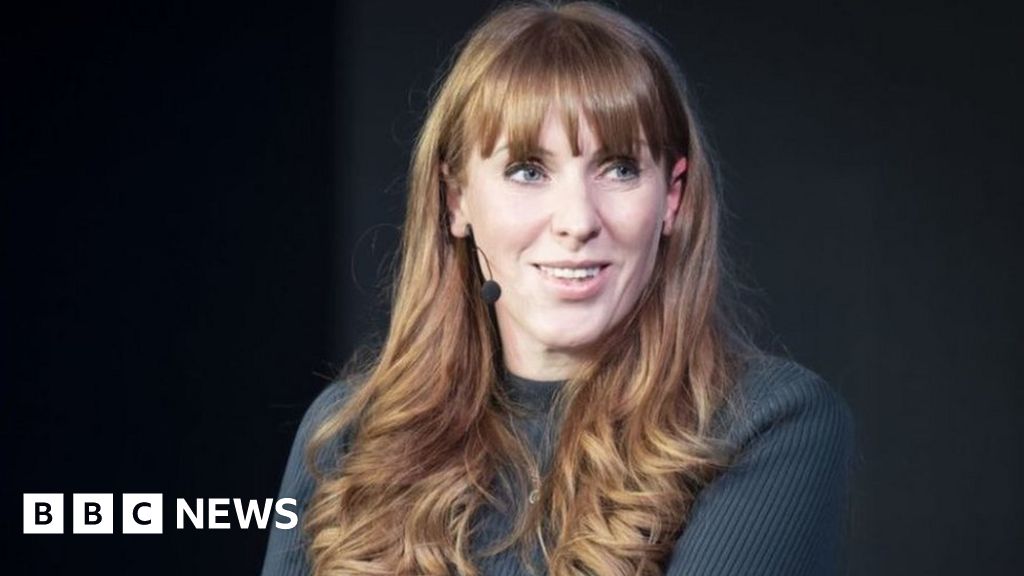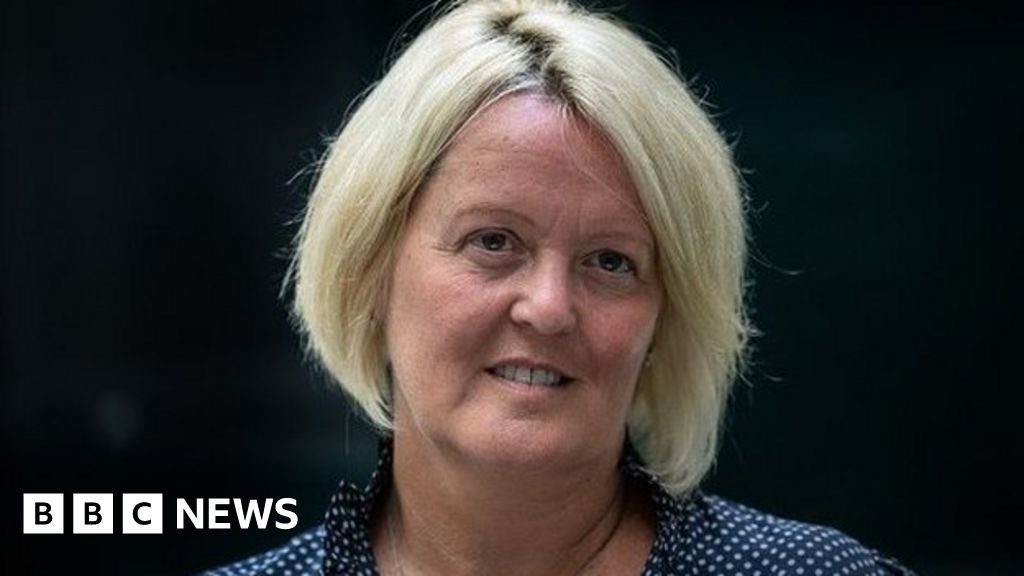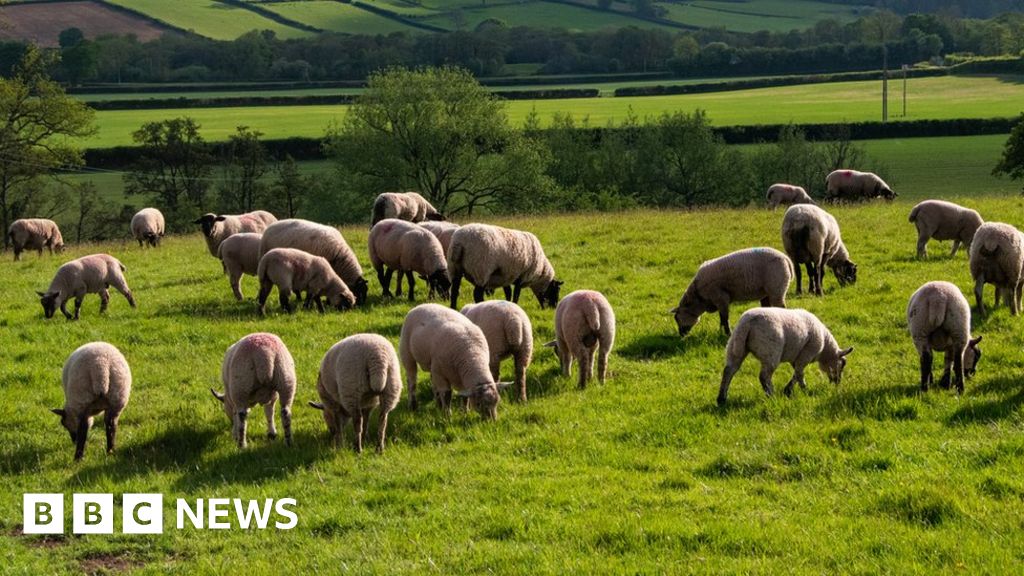[ad_1]
By Reality Check team
BBC News
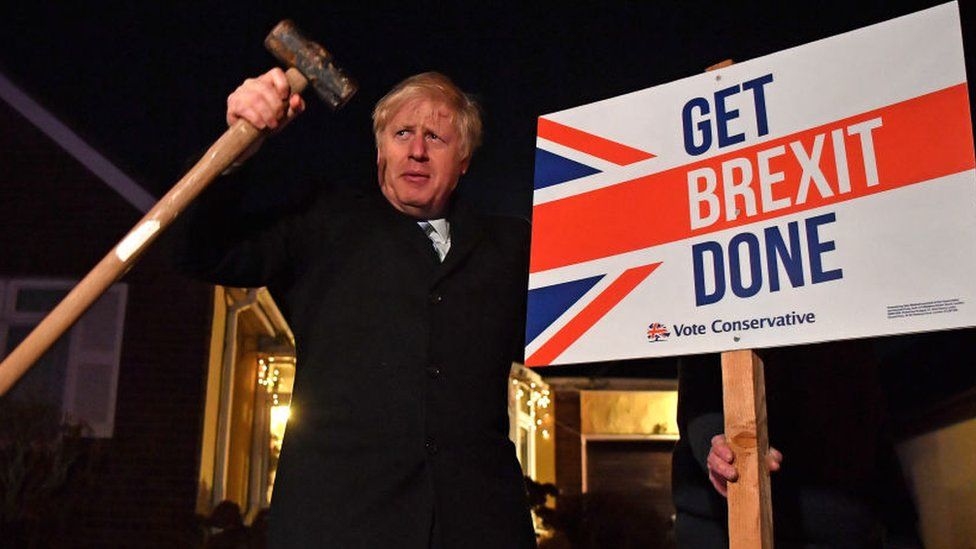 Image source, Getty Images
Image source, Getty Images“Get Brexit done” was the central theme of the Conservatives’ 2019 manifesto.
After surviving an attempt by his own MPs to oust him, Boris Johnson has said he wants “to get on with the mission on which this government was elected”. Mr Johnson has made a series of pledges to voters since winning the 2019 election.
Delivering on them has been made harder by the Covid pandemic, so how is he getting on?
Pledge: 50,000 more nurses and 6,000 more GPs
The Conservatives promised this for England by March 2025.
Latest figures show 321,018 full-time equivalent NHS nurses and health visitors in February 2022. That is up 24,295 since December 2019, leaving 25,705 posts to fill in the next three years.
On GPs, there were 35,855 full-time equivalents in post in April 2022. That’s up by 1,147 since the end of December 2019.
If you exclude trainees and locums (doctors who temporarily fill a rota gap or who are not yet fully qualified), GP numbers have only risen by 97 since December 2019.
By either measure, an increase of 6,000 is a long way off and Health Secretary Sajid Javid has admitted: “I do not think we are on track”.
Pledge: Build 40 new hospitals
This 2019 pledge is to be met “over the next 10 years”. Another eight hospitals have been added to this target but have not yet been announced.
In August 2021, the government came up with several definitions for what it said constituted a “new” hospital:
- A whole new hospital on a new site or current NHS land
- A major new clinical building on an existing site or a new wing of an existing hospital
- A major refurbishment and alteration of all but building frame or main structure
In December 2021, analysis by BBC Reality Check and the Nuffield Trust, found that of the 40 hospital projects announced by the government:
- 22 are rebuilding projects
- 12 are new wings within existing hospitals
- three involve rebuilding non-urgent care hospitals
- three are entirely new hospitals
When asked for an update, on 7 June 2022, a Department of Health spokesperson told us that one of the 40 hospitals “opened for patients last year and a further six are in construction”.
We are waiting for an answer about progress on the other 33.
Pledge: 20,000 more police
The Conservatives promised this for England and Wales by March 2023.
Latest figures, up to 31 March 2022, show an extra 13,576 police officers recruited. That means the government is two-thirds of the way there with one year to go.
But that rise still hasn’t made up for police numbers falling by 20,545 between March 2010 and March 2019 – under Conservative-led governments.
Pledge: 300,000 homes a year
This manifesto pledge is to be met by “the mid-2020s”.
In 2019-20, there were 242,700 net additional dwellings, which fell to 216,490 in 2020-21.
Net additional dwellings includes houses converted to flats, commercial buildings switching to domestic use, as well as new builds. It also factors in demolished houses.
In May 2022, former Housing Secretary Robert Jenrick told MPs: “The government will miss their 300,000-homes-a-year manifesto pledge by a country mile.”
The prime minister was asked about the pledge on 9 June 2022 and said: “I can’t give you a cast iron guarantee that we’re going to get to a number in a particular year.”
Pledge: Get Brexit done
This was achieved in a literal sense, as the UK left the EU on 31 January 2020.
Britain departed from the EU’s single market and customs union 11 months later, after agreeing a basic free trade deal with the EU.
But if this election slogan implied Brexit would be done and dusted, this has clearly not happened. A huge amount remains unresolved, from Northern Ireland to financial services.
A large number of trade deals have been signed around the world (most to replace the ones the UK already had as an EU member) but a deal with the US hasn’t happened.
The Office for Budget Responsibility (OBR), which makes economic judgements for the government, predicts that leaving the EU will reduce the UK’s imports and exports by about 15% in the long term, with about a 4% hit to productivity.
Supporters of Brexit say sovereignty has been restored, and unwanted regulations can now be cut.
Pledge: No checks on goods going from GB to NI, or NI to GB
When Boris Johnson made this pledge in 2019 it ran counter to the facts of the Brexit deal for Northern Ireland (NI).
Between January 2021 and March 2022, more than 164,000 checks were carried out at NI ports on food consignments and live animals.
The checks, which are opposed by the Democratic Unionist Party, have become a political problem for the government.
Pledge: Australian-style points-based immigration system
This reform was not possible while the UK was in the EU single market because of rules giving citizens the freedom to live and work in all EU countries.
After Brexit, the government launched this scheme so EU citizens wishing to live and work in the UK have to apply for a visa via a points-based system (PBS), the same as citizens from the rest of the world.
The process has not been all plain sailing. Leaving the EU single market is one of the factors that contributed to an HGV driver shortage, because EU drivers can no longer come and go as they please. The government had to introduce 5,000 temporary visas for this sector.
Pledge: No rise in rates of income tax, National Insurance or VAT
This 2019 manifesto pledge has been broken.
In September 2021, the government announced that workers, the self-employed and employers would pay 1.25p more National Insurance (NI) in the pound from April 2022.
But, because of cost of living pressures, the government later reduced the impact of this by announcing that from July 2020 the point at which employees would start paying NI would increase to £12,570.
Combining those two measures means that in the 12 months from April 2022, anyone earning less than about £34,000 will pay less NI than they did last year. Anybody earning more than that will pay more.
Pledge: Fix the crisis in social care
The government says the money from the NI rise will go initially towards easing pressure on the NHS.
A proportion will then be moved into the social care system – which Mr Johnson pledged, in 2019, to “fix”.
In 2021, the government unveiled its plan to cap the costs that people in England pay for social care. From October 2023, this will be set at a maximum of £86,000 for care during their lifetime.
But the long-awaited reform of funding does not deal with other problems such as the shortage of care workers. Research last month estimated that 500,000 adults in England were waiting for social care, up from 294,000 a year ago.
Pledge: Keep the triple lock
The triple lock means the state pension increases each year at whichever of these is highest:
- CPI inflation (the rate at which prices are rising as measured by the Consumer Prices Index)
- average wages
- or 2.5%
The 2019 Conservative manifesto said it would stay for the duration of this Parliament.
But this promise was broken on 7 September when the government announced it was suspending the triple lock for a year and blamed the pandemic. Instead of rising with average wages – the highest of the three measures – the government said pensions would rise by either inflation or 2.5% instead.
Pledge: Spend 0.7% of GNI on international aid
This manifesto promise has also been broken.
The UK’s annual aid budget has been reduced to 0.5% of GNI (gross national income) – a cut of about £4bn.
Again, the government blamed the pandemic – saying cutting aid spending would help restore the public finances.
It says the 2015 legislation, which introduced the 0.7% target, refers to “fiscal circumstances” which governments may refer to, if they fail to meet it.
Covid
As well as pledges, Boris Johnson has made claims about his government’s record during the pandemic.
Claim: Fastest vaccine roll-out in Europe
The UK was the first country to approve a Covid vaccine – on 2 December 2020. Its vaccine rollout began on 8 December 2020 – weeks before the EU’s.
The UK vaccine programme was the fastest in the EU until May 2021.
After that, other EU countries caught up if you look at doses per 100 people in a country’s population.
Claim: Fastest growth in the G7
The prime minister has repeatedly talked about the UK having the fastest-growing economy in the G7, which is a club of major, developed economies.
Whether this is true depends on which period you are looking at.
- For the whole of 2020, the UK economy contracted by 9.3%, which was the biggest decline in GDP in the G7
- For the whole of 2021, it grew by 7.4%, which was the biggest growth in the G7
- The IMF predicts that in 2022 the UK will have 3.7% growth, the joint second highest in the G7 (behind Canada)
- The OECD forecasts that the UK will have zero growth in 2023, and will be the slowest growing economy in the G7
- If you look at growth since before the pandemic, the UK is in third place in the G7 with 0.7% growth
Update: This piece was first published on 4 October 2021 and has been updated several times since then to add pledges and update figures.
[ad_2]
Source link

